We use cookies to personalize content and advertisements, to offer social media functions and to analyze access to our website.
You can revoke the given consent at any time. You can find further information in our Privacy Policy.
Jun 2015
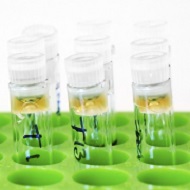 The European Chemicals Agency (ECHA) has added two new substances of very high concern (SVHC) to the REACH Candidate List. The Candidate List now contains 163 substances.
The European Chemicals Agency (ECHA) has added two new substances of very high concern (SVHC) to the REACH Candidate List. The Candidate List now contains 163 substances.
The two new entries refer to:
1,2-benzenedicarboxylic acid, di-C6-10-alkyl esters; 1,2-benzenedicarboxylic acid, mixed decyl and hexyl and octyl diesters with ≥ 0.3% of dihexyl phthalate (EC No. 201-559-5) which were added to the list due to their reproductive toxicity properties . These substances are used for example as plasticisers and lubricants, including use in adhesives, coatings, building material, cable compounding, polymer foils, PVC compounds and artist supply (e.g. modelling clay and finger paints).
5-sec-butyl-2-(2,4-dimethylcyclohex-3-en-1-yl)-5-methyl-1,3-dioxane [1], 5-sec-butyl-2-(4,6-dimethylcyclohex-3-en-1-yl)-5-methyl-1,3-dioxane [2] [covering any of the individual stereoisomers of [1] and [2] or any combination thereof]: This second SVHC has been added as a group entry with very persistent and very bioaccumulative properties. This group of substances covers, for example, the product with the trade name “karanal”. Public information sources indicate that karanal is mainly used as a fragrance ingredient.
More information on http://echa.europa.eu/view-article/-/journal_content/title/two-new-substances-of-very-high-concern-svhcs-added-to-the-candidate-list
Jun 2015
 The European Commission is now referring Germany to the EU Court of Justice: Up to date, Germany has not transposed EU Directive 2012/19/EU on waste electrical and electronic equipment (WEEE Recast) into national law, although the deadline for implementation has expired on February 14, 2014.
The European Commission is now referring Germany to the EU Court of Justice: Up to date, Germany has not transposed EU Directive 2012/19/EU on waste electrical and electronic equipment (WEEE Recast) into national law, although the deadline for implementation has expired on February 14, 2014.
Due to this failure, the EU Commission is asking the Court, on the basis of the procedure set out in Article 260(3) TFEU, to impose a penalty payment on Germany in the amount of EUR 210 078 per day until the new legislation is enacted.
In Germany, the WEEE Recast is transposed by the German ElektroG2. A respective draft legislation has been published and will be discussed in an official hearing by experts on July 17, 2015. Because of the pending financial sanctions, the legislation process could be pushed. So far, the new ElektroG2 was expected to enter into force only at the end of this year.
May 2015
On 22, May 2015 | In News @en | By Alisa Maier
 Yesterday, the EU Parliament in Strasbourg rejected a draft law on conflict minerals. The Members of Parliament considered the proposed regulations, which were based on approach to self-certification, as not sufficiently far-reaching.
Yesterday, the EU Parliament in Strasbourg rejected a draft law on conflict minerals. The Members of Parliament considered the proposed regulations, which were based on approach to self-certification, as not sufficiently far-reaching.
They called for a mandatory certification for all companies importing so-called conflict minerals as tin, tantalum, tungsten and gold into the EU. Additionally, the downstream industry branches shall meet specific information requirements, in order to identify and tackle risks in the supply chain. About 880 000 producers of consumer goods that use conflict minerals in their manufacturing process might be affected.
With their requirements the Members of Parliament follow the example of the Dodd-Frank Act which is in force since 2010 in the US.
In the next step, the EU Parliament will enter into negotiations with the Council in order to conclude a final version of the law
May 2015
On 21, May 2015 | In Copyright Levies, News @en | By Alisa Maier
 More than a year ago, the activities of the Private Copy Commission, discussing and deciding any copyright levy matter in France, were interrupted by the withdrawal of the industry representatives. Regardless of this, all provisions and levy amounts remained in force. On the initiative of the Ministry of Culture this situation is to be terminated now: thorough substantive and organizational preparations including preliminary talks with the Commission members will be completed in June, so that a next meeting date can be set in September.
More than a year ago, the activities of the Private Copy Commission, discussing and deciding any copyright levy matter in France, were interrupted by the withdrawal of the industry representatives. Regardless of this, all provisions and levy amounts remained in force. On the initiative of the Ministry of Culture this situation is to be terminated now: thorough substantive and organizational preparations including preliminary talks with the Commission members will be completed in June, so that a next meeting date can be set in September.
This is deemed necessary, among others, because six previous decisions of the Private Copy Commission had been suspended by court ruling recently. The most recent being decision No 13 in June 2014. As each decision is valid until the release of the next, the basis for past payments is in question. This applies, to emphasise again, only in respect of the past. The Conseil d’État, the French Supreme Court for Administrative Justice, confirmed the latest two decisions of the Private Copy Commission towards the end of November 2014. Thus, the current product lists, tariff calculations and tariff amounts provided by 1cc to its clients remain valid. Concerning the suspension of the above mentioned decisions: Décision n° 7-11, 2007-2008 and n° 13, 2012, it is possible that past levies paid will have to be refunded in some way. This, however, is an open issue and will likely remain for the time being.
Due to the currently complicated levy situation in France, there is uncertainty with respect to the current state of affairs: We would like to point out that all daily compliance activities are to be maintained, and that 1cc will keep you updated on all changes to be reflected in the reporting efforts.
Apr 2015
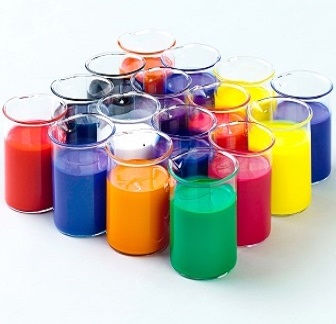 Article 33 of the REACH Regulation requires manufactures and importers of articles containing more than 0.1 percent of an SVHC (Substance of Very High Concern) to pass on this information within the distribution chain.
Article 33 of the REACH Regulation requires manufactures and importers of articles containing more than 0.1 percent of an SVHC (Substance of Very High Concern) to pass on this information within the distribution chain.
According to Article 7 (2), ECHA has to be notified accordingly. The European Court of Justice (EJC) is currently in the process of clarifying whether the 0.1 percent threshold refers to the entire weight of the article or to each component (legal proceeding C-106/14).
Whilst according to the guidance of the EU Commission and ECHA, the 0.1 percent threshold should refer to the entire weight of an article, six EU Member States – Austria, Belgium, Denmark, Germany, France and Sweden – and Norway followed the interpretation according to the rule “once an article, is always an article”. This means that the 0.1 percent threshold should be based on the weight of the single component of an article.
The final decision of the ECJ is expected in the course of this year.
Apr 2015
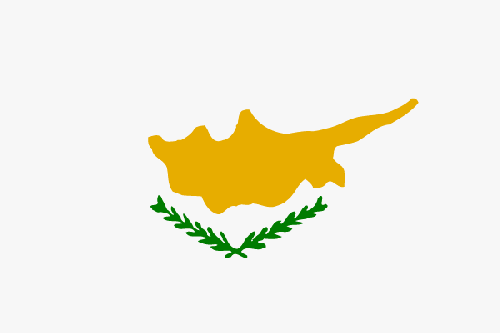 With some delay, Cyprus has transposed the WEEE Recast Directive 2012/19/EU into national legislation: The Waste (Waste Electrical and Electronic Equipment) Regulation 73/2015 was officially published on March 13, 2015.
With some delay, Cyprus has transposed the WEEE Recast Directive 2012/19/EU into national legislation: The Waste (Waste Electrical and Electronic Equipment) Regulation 73/2015 was officially published on March 13, 2015.
Based on the new WEEE Regulation, Cyprus has implemented the following:
– New producer definition, including direct sales to B2C and B2B end-users
– Authorized representative requirement
– 0:1 take-back obligation for small EEE for retailers with a sales area for EEE of more than 400m²
– Minimum requirements for shipment of used EEE/WEEE
– New WEEE categories applicable from August 15, 2018
– New collection target
Mar 2015
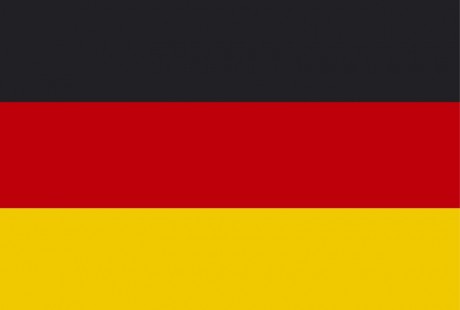 Consumers will be able to return their used electrical and electronic equipment such as laptops, radios or vacuum cleaners free of charge if they buy a new and comparable device in the store.
Consumers will be able to return their used electrical and electronic equipment such as laptops, radios or vacuum cleaners free of charge if they buy a new and comparable device in the store.
Smaller electrical and electronic equipment may be returned without purchasing a new device. However, the latter regulation will only apply to bigger retailers with a sales area of more than 400 square meters, and also to bigger online sellers.
The new take-back obligations are regulated by the reform of the German ElektroG (Electrical and Electronic Equipment Act), which is expected to enter into force at the end of this year. This reform transposes the changes of the WEEE Directive 2012/19 /EU (WEEE Recast Directive) which came into force in 2012. As further EU member states, Germany is in delay with the implementation which should have been carried out before February 14, 2014.
Beside the increased take-back obligations for retailers, the WEEE Directive foresees new collection rates for WEEE starting with next year. The collection rates shall evolve gradually, and from 2019 the minimum collection rate to be achieved annually shall be 65 percent. Furthermore, the product scope will be extended to all electrical and electronic devices beginning with 2018.
Feb 2015
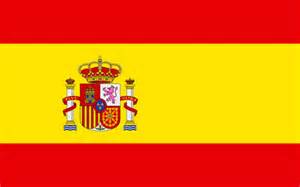 Spain was one of the EU member states which were delayed in transposing the EU WEEE Recast: Finally, on last Saturday, February 21, 2015, “Real Decreto 110/2015, sobre residuos de aparatos eléctricos y electrónicos” (Royal Decree 110/2015) was officially published in the Spanish Official Gazette. With this Decree, Spain has finally transposed the WEEE Directive 2012/19/EU into national law.
Spain was one of the EU member states which were delayed in transposing the EU WEEE Recast: Finally, on last Saturday, February 21, 2015, “Real Decreto 110/2015, sobre residuos de aparatos eléctricos y electrónicos” (Royal Decree 110/2015) was officially published in the Spanish Official Gazette. With this Decree, Spain has finally transposed the WEEE Directive 2012/19/EU into national law.
A deeper analysis of the new Spanish Decree will show which are the national specifications and changes. We will provide you soon with more information.
Feb 2015
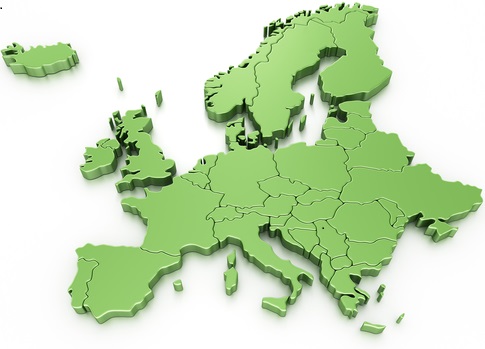 EU Member States have to adopt national laws, regulations and administrative provisions necessary to comply with the new Directive 2012/19/EU of 4 July 2012 on waste electrical and electronic equipment (WEEE Recast Directive).
EU Member States have to adopt national laws, regulations and administrative provisions necessary to comply with the new Directive 2012/19/EU of 4 July 2012 on waste electrical and electronic equipment (WEEE Recast Directive).
The deadline for transposition was 14 February 2014. Today, one year after that day, only 20 of the states have adopted the necessary legal provisions.
In Belgium only one of the three regions, namely Flanders, has transposed the Recast. Cyprus, Germany, Poland, Romania, Slovakia and Spain only have drafts available. In Slovenia not even a draft has been published yet.
Jan 2015
On 15, Jan 2015 | In Copyright Levies, News @en | By Alisa Maier
 While some countries around the world have created or expanded on their existing copyright levy systems, another European country has abolished its system as of January 1, 2015: Finland repealed the legal basis of the copyright levies on blank media & recording devices. Instead, the authors will be compensated via a fund paid out of the state budget. After the Finnish levy tariffs have remained unchanged for the last two years, the parliament voted in December to replace the Copyright Levy system by a government fund. From now on, no copyright levies should be paid anymore in Finland. In 2012 the Spanish Government decided to abolish its copyright levy system, establishing and replacing it by a different one, comparable to the Norwegian system, where levies are calculated into the state budget. In Estonia, a similar system is now in the planning phase.
While some countries around the world have created or expanded on their existing copyright levy systems, another European country has abolished its system as of January 1, 2015: Finland repealed the legal basis of the copyright levies on blank media & recording devices. Instead, the authors will be compensated via a fund paid out of the state budget. After the Finnish levy tariffs have remained unchanged for the last two years, the parliament voted in December to replace the Copyright Levy system by a government fund. From now on, no copyright levies should be paid anymore in Finland. In 2012 the Spanish Government decided to abolish its copyright levy system, establishing and replacing it by a different one, comparable to the Norwegian system, where levies are calculated into the state budget. In Estonia, a similar system is now in the planning phase.
Basically, device- and media-based copyright levy systems are a matter of fervent controversies in all countries in which they are implemented. Nevertheless, their abolishment can be considered critical: The question of (the estimated) harm for right holders caused by private copying remains and, with it, the question of its compensation. A state budget being nothing but tax revenue, every author would rely on government aid. In fact, the harm is to be taken into account and, in the absence of a copyright levy system, he will simply be financed from other sources. The authorities will raise their claims elsewhere. Does it have anything to do with the fact that the Spanish authority tried to claim excessive fees for licensing recently? It seems as if the controversy just shifted somewhere else.